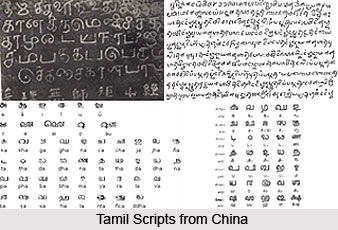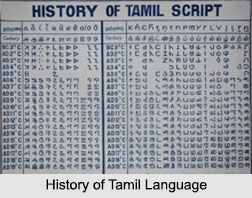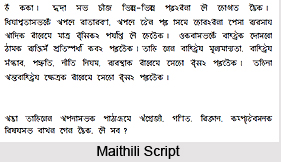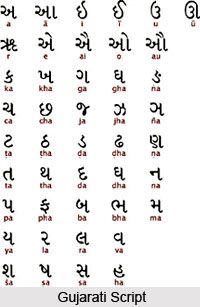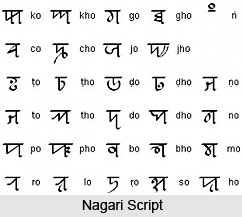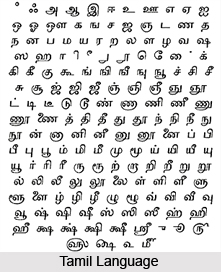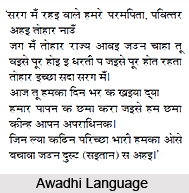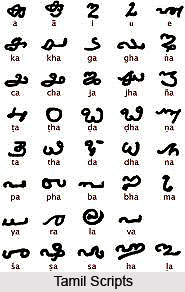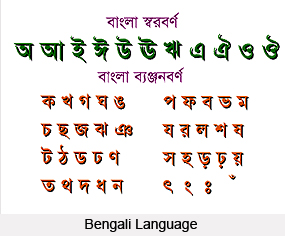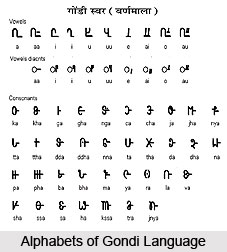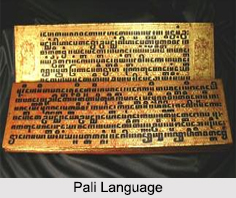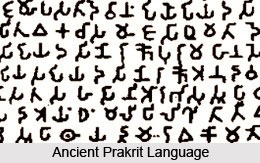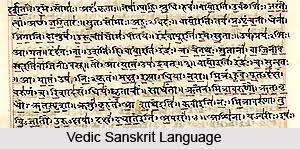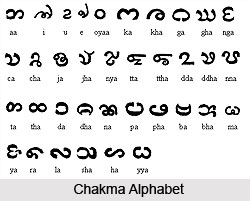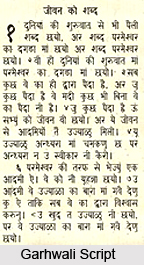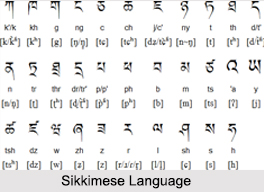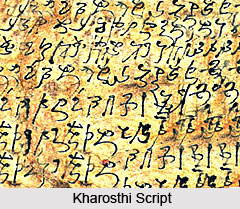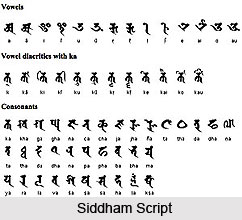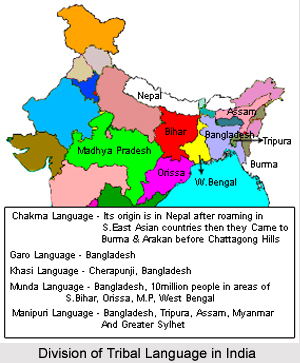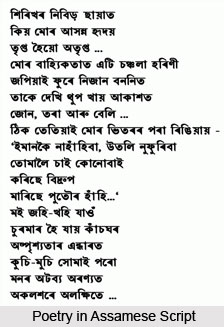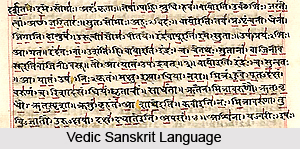 Linguistic history of India delineates and re-draws the evolution and metamorphoses of early human communication techniques, ranging from pictures, pictorial handwritings and even engravings, to the modern Indian languages that assimilate within the Indo-Aryan languages and Dravidian languages. In fact, the modern age in India, precisely the Mughal period and British domination later had made crucial contributions and divergences that enriched linguistic history of India.
Linguistic history of India delineates and re-draws the evolution and metamorphoses of early human communication techniques, ranging from pictures, pictorial handwritings and even engravings, to the modern Indian languages that assimilate within the Indo-Aryan languages and Dravidian languages. In fact, the modern age in India, precisely the Mughal period and British domination later had made crucial contributions and divergences that enriched linguistic history of India.
Indo-Aryan languages
Indo-Aryan languages belong to the branch of the Indo-European language family. According to SIL International`s (a U.S.-based, worldwide Evangelical Christian non-profit organisation, whose chief aim is to study, develop and document lesser-known languages) 2005 estimate, they had come up to a counting of total 209 variety of languages. The largest linguistic history in Indian languages were in terms of native speakers, with the significant ones being: Hindustani (Hindi and Urdu, approximately 540 million), Bengali (approximately 200 million), Punjabi (approximately 100 million), Marathi (approximately 90 million), Gujarati (approximately 45 million), Nepali (approximately 40 million), Oriya (approximately 30 million), Sindhi (approximately 20 million), Sinhala (approximately 16 million) and Assamese (approximately 14 million). The total number of native speakers counted, had in fact exceeded more than nine hundred million.
Categorization of Indo-Aryan Languages
* Vedic Sanskrit that witnessed the emergence of four cardinal Vedic texts.
* Classical Sanskrit that encompasses times of Panini and his spreading of rather fluid Sanskrit.
* Emergence of Prakrits which includes its popularisation within the social community.
* Pali or the all-inclusive language of Buddhism.
* Middle Indic or the emergence of divisions of North Indian languages.
* Emergence of Modern Indo-Aryan languages or the gradual dialectic metamorphoses of Hindi and Urdu.
Sub Groups of Indo-Aryan Languages
Indo-Aryan languages are further categorized into a sub-group, known as Indo-Iranian languages, which consists of three other language groups, namely the Iranian, Nuristani and Dardic. Besides these classified Indian language families, linguistic history of India also mentions other secondary names of familial interrelationships. Minor linguistic families include the Austro-Asiatic and Tibeto-Burman families with approximately 10 and 6 million speakers, respectively. Kashmiri, considered a Dardic language, possesses approximately 4.6 million speakers in India. There also exists an isolated language in the country, the Nihali language.
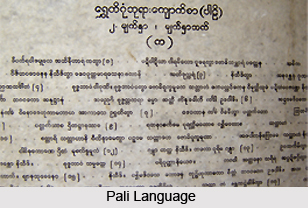
Vedic Sanskrit Language
Vedic Sanskrit was that period of significant commencement that continues to this date with extensive research work. Sanskrit is believed to be a descendent of the Proto-Indo-European language. It falls under the Indo-Aryan sub-family of the Indo-Iranian branch. Vedic Sanskrit implies the language of the Vedas, an enormous collection of hymns, incantations, and religio-philosophical discussions. The four Vedas form the earliest recorded religious texts in India and the basis for much of Hinduism. Linguistic history of India considers the metrical hymns of Rig Veda Samhita to be the earliest, compiled by umpteen authors over centuries of oral tradition. The culmination of the Vedic period is distinguished by composition of the Upanishads, which form the closing part of the Vedic corpus in traditional compilations, dated to approximately halfway of first millennium B.C. It is precisely around this time that Sanskrit began the transition from a first language to a second language of religion and learning, punctuating the commencement of the classical period.
Classical Sanskrit Language
Classical Sanskrit had made much to contribute to linguistic history of India, which, it is believed, was the basis of language evolvement during primeval times. The oldest outlasting Sanskrit grammar is Panini`s Astadhyayi ("Eight-Chapter Grammar"), dated to ca. 5th century B.C. The scripture is fundamentally a prescriptive grammar, i.e., an authority that defines (rather than distinguishes) accurate Sanskrit, although it contains descriptive sections. These descriptive sections mostly accounted for Vedic forms that had already died out of utilisation in Panini`s time.
When the term came into being in India, "Sanskrit" was not regarded as that particular language sequestered from other languages, but rather used in a predominantly refined or perfected approach to speaking. Knowledge of Sanskrit was looked at as an indicator of higher social class and educational accomplishment. The subject was taught principally to Brahmins through secured scrutiny of Sanskrit grammarians like Panini. Vedic Sanskrit and Classical or "Paninian" Sanskrit are often differentiated as separate dialects. However, they are profoundly similar in several ways and differ chiefly in few points of phonology, vocabulary and grammar.
Prakrit Language
The emergence of Prakrits in ancient Indian kingdoms made the linguistic history of India much more bookish yet employable. Prakrit stands for being "original, natural, artless, normal, ordinary and usual", i.e. being "vernacular" in nature. Prakrit pertains to the all-encompassing family of the Indic languages and dialects uttered in ancient India. One section of contemporary scholars includes all Middle Indo-Aryan languages under the authoritative header of "Prakrits", while others punctuate the independent evolvement of these languages. Linguistic history of India had, by the time of emergence of Prakrit, travelled a considerable journey, entering into the modern classical phase of sophistication and pomp.
Prakrits became literary languages, generally patronised by kings belonging to ksatriya caste. The earliest surviving use of Prakrit is the inscriptions of emperor Ashoka. The various Prakrit languages are linked with diverse patron dynasties, with different religions and different literary customs and heritage. It is also known that while enacting a Sanskrit drama, kings versed in Prakrit when addressing women or servants, in contrast to the Sanskrit used in reciting more formal poetic monologues. The three dramatic Prakrits - Sauraseni, Magadhi, Maharashtri as well as Jain Prakrit, represent an individualistic tradition of literature within history of medieval India.
Pali Language
Linguistic history of India gained new definitions and filiations, with the arrival of middle ages and Pali language with it, a fresh divergence from ancient principles and their writings styles. Pali soon followed behind Sanskrit and Prakrit, making ancient Indian languages known to world history, arresting attention of ancient legendary scholars. Pali is an idiom used to portray the Middle Indo-Aryan language, in which Theravada Buddhist scriptures and commentarial texts have been meticulously preserved. Pali was considered by the Theravada tradition to be the same language as Magadhi, but contemporary times have the faith that this is highly implausible. Pali demonstrates signs of maturation from several underlying Prakrits. Prakrit of the North-western region of India, known as "Gandhara" has come to be termed as "Gandhari". A few documents written in the Kharosthi script survive to this date, including a version of the `Dhammapada`.
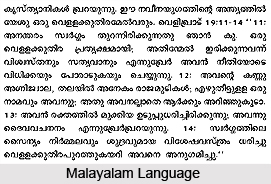
Middle Indic language
Middle Indic language epoch ushered in the dismantlement of Prakrit, which was to witness rise of legendary writers and their distinctive style. The Prakrits (including Pali ) were gradually metamorphosed into `Apabhramsas`, which were employed until approximately the 13th century. The term Apabhramsa denotes the dialects of North India before the rise of modern North Indian languages. The term `Apabhramsa` also specifically entails a distorted form or non-standard language. A substantial amount of Apabhramsa literature has been luckily recovered in Jain libraries. The times mirrored linguistic differences, which manifested itself in history of India. On one side legends like Amir Khusro and Kabir were writing in a language quite analogous to modern Urdu or Hindi, and on the other side many poets, especially in regions that were still ruled by Hindu kings, continued to pen in Apabhramsa. The Apabhramsa authors include Sarahapad of Kamarupa, Devasena of Dhar (9th century A.D.), Pushpadanta of Manyakhet (9th c. AD), Dhanapal, Muni Ramsimha, Hemachandra of Patan, Raighu of Gwalior (15th century A.D.). An early instance of usage of Apabhramsa is the play Vikramorvasiya of Kalidasa, when Pururavas enquires from the animals in the forest about his beloved who had vanished into nowhere.
Modern Indo-Aryan Languages
Emergence of Modern Indo-Aryan languages can be referred to as the culminating phase of Indo-Aryan linguistic historical development of India, which are predominantly based upon Hindi and Urdu. The history of the Hindi dialect gamut, including Urdu represents the central zone dialects of Indo-Aryan fashion of language. These dialects had emerged forth from `Apabhramsa` in the 7th century. By the arrival of 10th century, this Hindi continuum had become acknowledgeable as predecessors of the contemporary Indo-Aryan languages (old Hindi). Braj was the popular literary dialect during this long spaced time, until it witnessed its replacement by khariboli in 19th century. Post 1947 Indian Independence and partition of India, a Sanskritised adaptation of Khariboli had become a major lingua franca of the Republic of India. Recognised as standard Hindi, this very khariboli Hindi version is presently adopted and utilised as the national language throughout the Indian subcontinent. The Persianised version of Khariboli became the major lingua franca of Pakistan, known as Urdu Language.
It was precisely during this modernistic development of languages that the Indian language movements had taken place in a sequential manner. The British advent and supremacy had ushered in umpteen changes in every walk of life, beginning with language structure and literature and ending in the end of two hundred of slavery.
Dravidian Languages
Linguistic history of India further unfurls the verity that the Dravidian family of languages encompasses approximately seventy three languages, including the four literary languages of Kannada, Malayalam, Tamil and Telugu, that are basically spoken in southern India. The origins of Dravidian languages, as well as their consequent development and the period of their demarcation are yet undecided in Indian history. Linguistic history of India and its situation further runs into the negative scenario by the lack of comparative linguistic research of Dravidian languages. Indecisive attempts have also been made to relate the family with the Japonic languages (Japonic languages or Japanese-Ryukyuan languages is a language family that descended from a common patrimonial language known as Proto-Japonic or Proto-Japanese-Ryukyuan) and with the extinct Elamite language (Elamo-Dravidian hypothesis).
Origin of Dravidian Languages
Legends commonplace to several Dravidian-speaking groups state their origin in a vast, now-drowned continent towards the far south. Many linguists however, tend to support the theory that speakers of Dravidian languages had scattered towards south and east through the Indian subcontinent. This amazing linguistic historical legend of India is solely based upon the fact that southern Dravidian languages illustrate some signs of relation with linguistic groups which the northern Dravidian languages do not. Proto-Dravidian is thought to have distinguished and consequentially severalised into Proto-North Dravidian, Proto-Central Dravidian and Proto-South Dravidian around 1500 B.C., although some linguists rest on the argument that the degree of severlisation between the sub-families points to an earlier fragmentation.
The existence of the Dravidian language family was first suggested during British Empire domination in 1816 by Alexander D. Campbell in his "Grammar of the Telugu Language". Linguistic history of India was also substantially linked with English administrators and their contribution to native context. In the text, Campbell and Francis W. Ellis had argued that Tamil and Telugu had descended from a common, non-Indo-European ancestor. Robert Caldwell had then coined the term "Dravidian" from the Sanskrit Dravida, germinated from the word `Tamil` or `Tamilan`, which sequentially changed into `Dramila`, `Dramia`, `Dramida` and `Dravida`. These terms were employed in a 7th century text to refer to the languages of south India. The publication of the Dravidian etymological dictionary by T. Burrow and M. B. Emeneau was an added milestone event in Dravidian linguistics.
